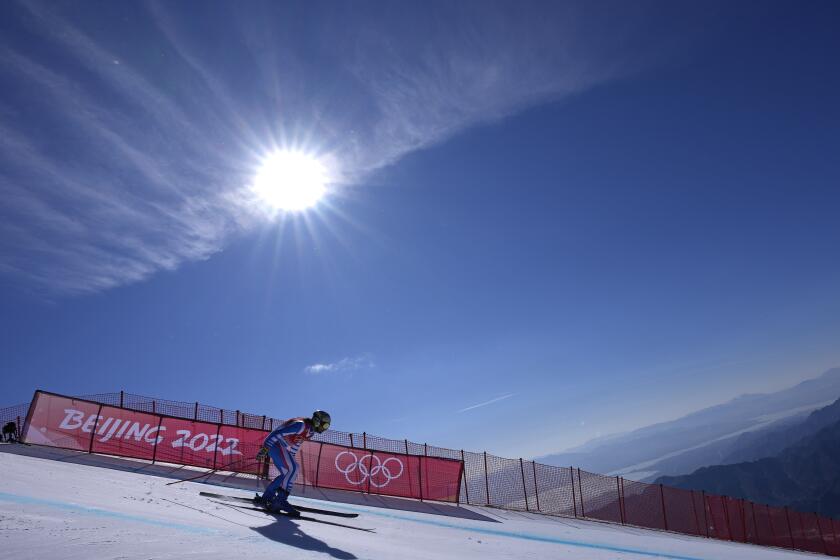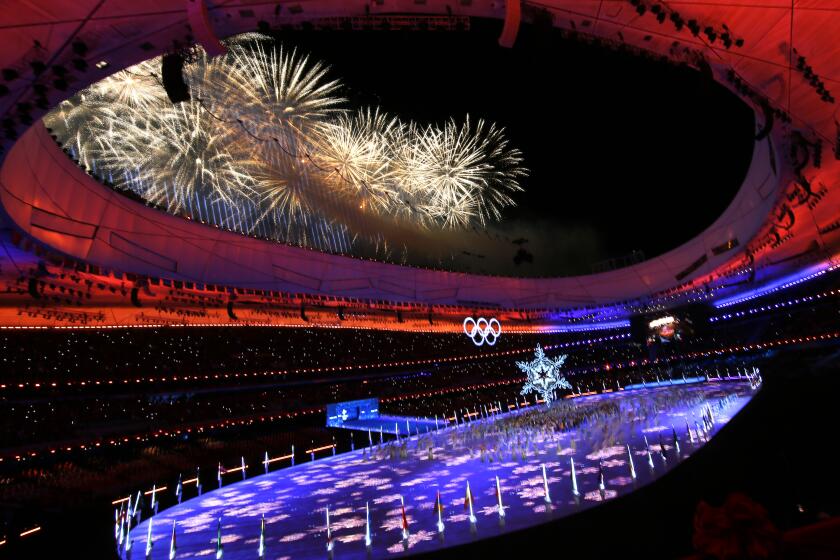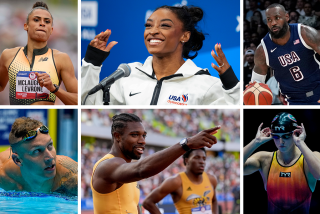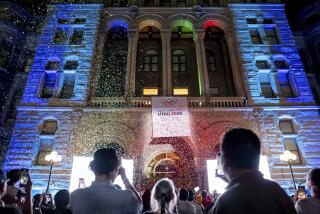Otherworldly feel of Alpine skiing venue a perfect fit for unusual Beijing Olympics
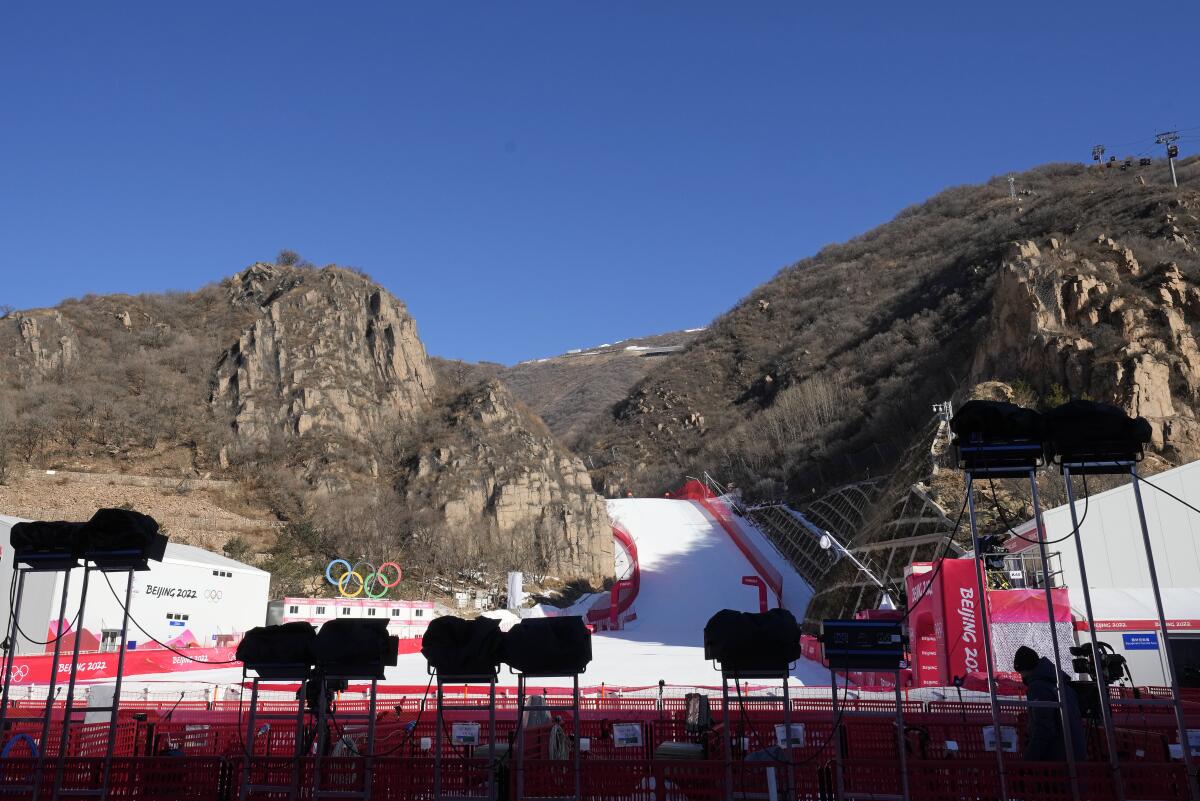
- Share via
BEIJING — The downhill track resembles a narrow white river snaking through the Xiaohaituo Mountain Area’s windswept brown scrub that extends in all directions.
In a Winter Games where the unusual has become routine — participants are segregated from society by walls, scores of security guards and strict travel limits because of the coronavirus — the competition that starts with the men’s downhill Sunday at the Yanqing National Alpine Centre is no exception.
Sixty-six miles from the main cluster of venues, the mountains that host the 11 Alpine skiing events receive less than eight inches of snow each year. The tracks of manmade snow lend an otherworldly feel to the barren area filled with canyons and large rocks that doesn’t resemble winter, other than biting cold and gusting wind.
“It reminds me of Baja if Baja was 40 degrees colder,” Travis Ganong, the U.S. downhiller from Lake Tahoe, said after his first training run.
Nathan Chen cleanly lands two quadruple jumps and compiles a personal-best score of 111.71 points to help give the U.S. the lead in the team event.
The venue that was completed in late 2019 is a cipher to Ganong and the rest of the Olympians. Test events were canceled because of the pandemic, so none of the competitors had skied the course until men’s downhill training started Thursday.
Studying drone videos of the run is one thing. Speeding through a downhill course with 2,900 feet of vertical drop — that’s more than the famed Streif run in Kitzbühel, Austria — with an Olympic medal on the line is another matter.
“I watched the first couple of guys go and went, ‘Oh, this is interesting,’” said Bryce Bennett, the Tahoe City native who won the World Cup downhill in Val Gardena, Italy, in December. “You’ve got to put that out of your mind. … It’s uncomfortable. You don’t know what the terrain is going to do. You’ve never been on it. You’re kind of nervous in the start, but you just commit to it.”
It’s a drastic change from the World Cup circuit, where skiers compete year after year on familiar courses where they know every quirk.
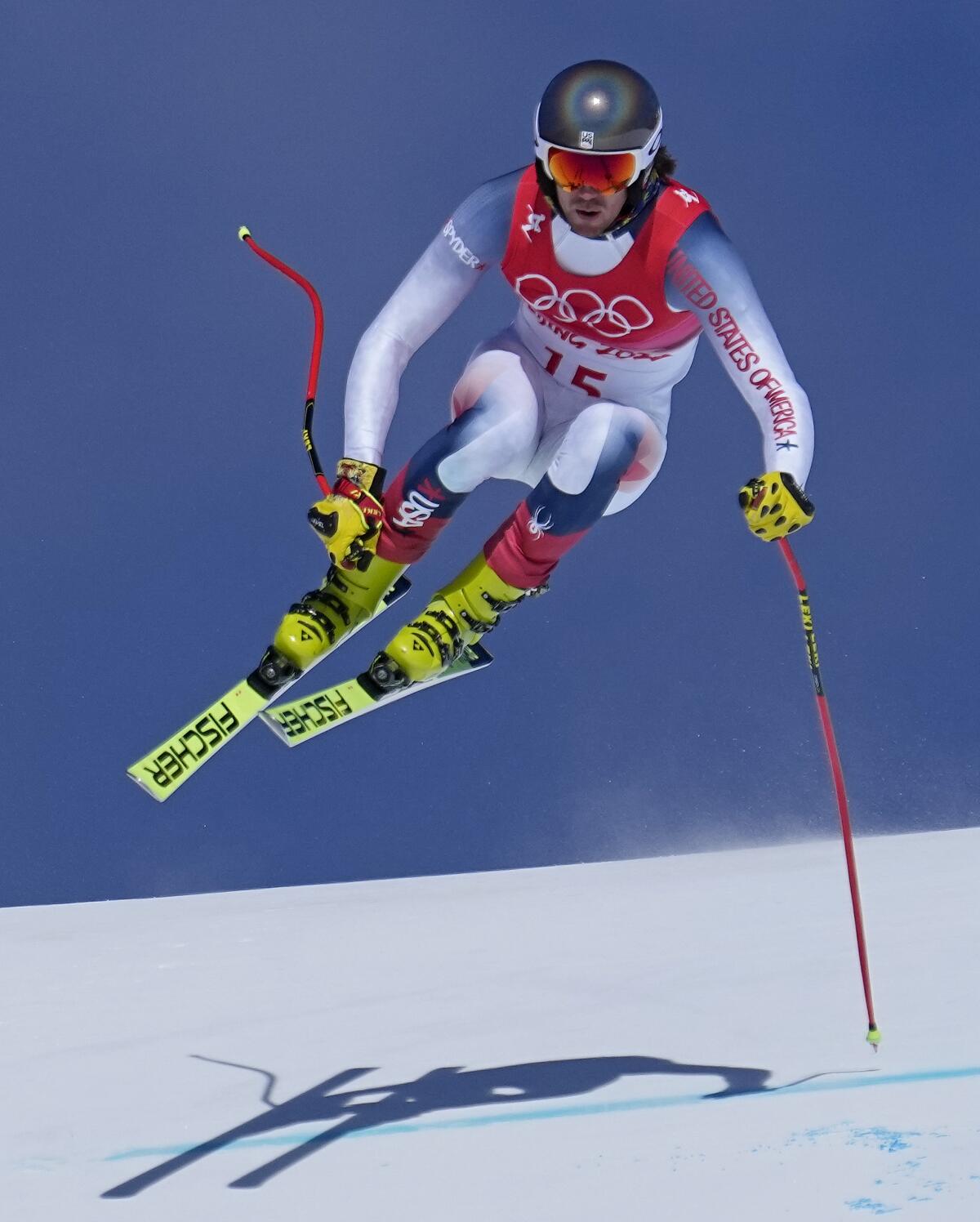
“At least everyone is in the same scenario,” said Jackie Wiles, another U.S. speed specialist from Portland, Ore. “It’s not like anything we’ve ever seen. It’ll be really intriguing to see how people approach it.”
The course isn’t the only part that’s different about these Games for the U.S. Alpine team.
Yes, Mikaela Shiffrin, the world’s top-ranked women’s skier, will push for medals in five individual events after winning gold in the giant slalom at the Pyeongchang Olympics four years ago. The 26-year-old is one of the signature attractions at the Games, promoted on a vast range of platforms that include an NBC commercial where Jurassic World dinosaurs chase her through a snowy forest. Shiffrin, of course, escapes unscathed.
Beyond Shiffrin, the team doesn’t boast sure-fire medal contenders. The men bring just six skiers — their smallest team since 1984 — thanks in part to a controversial revision to the quota system by the International Ski Federation that’s part of an effort to diversify the countries competing. It’s a drastic cut from the 13 U.S. men who competed in Pyeongchang.
For China’s leader, a successful Winter Games means international validation. It proves that he has strengthened China and the world must play along.
But there is experience. In addition to Bennett, three of the men — Ganong, Tommy Ford and Ryan Cochran-Siegle — have reached World Cup podiums. All of them have fought back from serious injuries, including a devastating crash in January 2021 that sidelined Ford for the last year.
“There are a lot of dark-horse opportunities,” said Ted Ligety, the two-time Olympic gold medalist and one of the world’s top giant slalom specialists before retiring in early 2021.
On the women’s side, Breezy Johnson, one of the world’s top downhillers, would’ve challenged for a gold medal but injured a knee in a crash during training last month. Instead of traveling to Beijing with the rest of the speed team, she underwent surgery this week and will miss the Games.
Aside from Shiffrin, Wiles and Paula Moltzan are the only women on the U.S. team with top-three finishes in World Cup events.
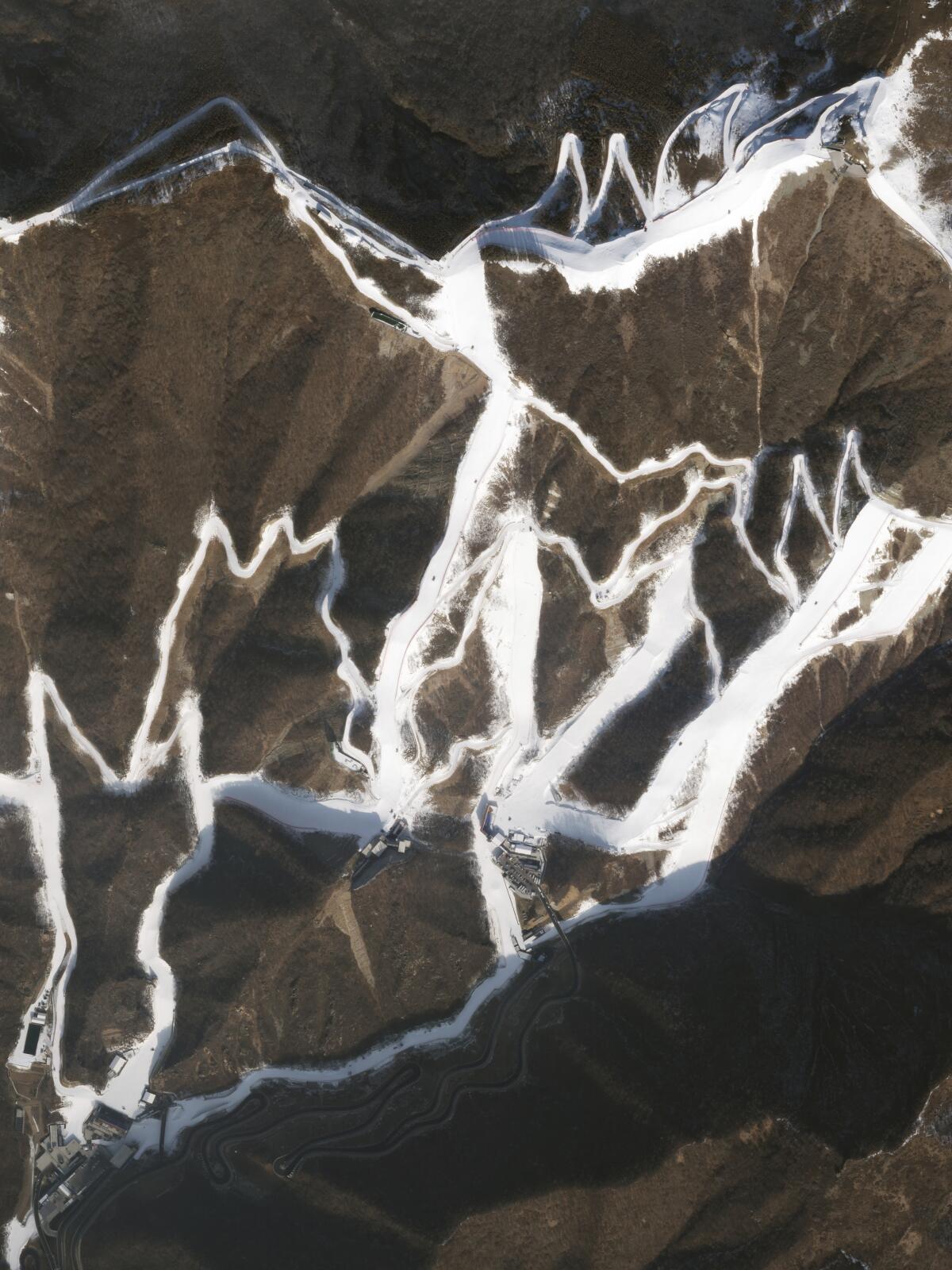
And, of course, the U.S. is without Lindsey Vonn. The all-time winningest female ski racer retired in 2019 after a career that included four overall World Cup championships and three Olympic medals.
“We struggled with depth for a while, but I’m really optimistic with some of the young girls who are coming up,” Vonn said. “On the men’s side, it’s not as deep of a field as we would hope. After this Olympics when some of my generation retires, I think there will be a pretty big hole. I think we probably will need to spend a little bit more time on the development program.”
Ligety and Vonn will contribute to NBC’s coverage of the Olympics, but, like the rest of the network’s commentators, will remain in the U.S.
The first challenge for a U.S. skier, though, remains their crash-course in learning the new slope.
“Normally we race on the same tracks, the same venues every year,” Ganong said. “As a rookie you learn these tracks and you build your way up to the point where you feel comfortable racing. We have to do that now in three days. It’s going to be tough.”
Recapping the news, results and highlights from The Times’ team of reporters who covered the 2022 Beijing Olympic Games.
From the start of the two-mile men’s downhill course, skiers can see Beijing’s towers. It’s a jarring view for competitors accustomed to European forests and mountain towns. There’s gusting wind throughout the mountain, enough to delay the second day of training by an hour. Temperatures are forecast to feel like 4 degrees below zero Sunday.
Parts of the downhill course left skiers grasping for comparisons. One stretch resembled Beaver Creek. Another part was like Aspen. The top drawing reminded one skier of the Jeongseon Alpine Centre at the Pyeongchang Games. But the comparisons only go so far. The truth is they’ve never seen anything like it.
More to Read
Go beyond the scoreboard
Get the latest on L.A.'s teams in the daily Sports Report newsletter.
You may occasionally receive promotional content from the Los Angeles Times.

